Chris Grinter, 1. jūlijā, 2010 Un tagad par vēl reti atkārtošanos sēriju, Tautas balss! Attiecībā uz tiem bez rētas vidusskolas atmiņām latīņu klases (vainas mans skolotājs) Es atnesīšu jums līdz ātruma – virsraksts aptuveni lēšama “tautas balss”. Šeit ir vēl viens vecs e-pastu, ka es esmu ietaupot. Tas ir 100% real message, but of course I have redacted the real names and addresses to protect the innocent. Enjoy! I also highly encourage submissions of your own-
Winter 2008:
“Sveiki, I’m so glad I found you. Tagad, I hope you can help me. 1982, while camping at an old gold mining camp in the Mendocino National Forest I was bitten by a large brown spider. It took three days for the venom to pass through my system. On day three I was 95% blind, the bite swelled to a large grotesquely deep red bump on my arm. I’ll never forget the 12 hours the venom attacked me. The price I payed to survive this spiders venom was…….to loose absolutely all my body fat. I spoke with a doctor from Santa Rosa by phone from a friends place in (some small CA town). He knew about this spider and couldn’t believe I suvived the venom when I told him I lost all my body fat. He also told me it was impossible for someone to survive loosing all their body fat in 12 stundas. I reminded him that this was an impossible situation. He told me that this spider is being kept from the public. I believe this spider came from China or Russia. These spiders don’t share anything with other Cali spiders. They have big bodies and short stout legs. The female that bit me was about 4 inch’s and, had 5 males. Four years later, while living in the Hayward hills, I couldn’t believe my eyes, running across the floor, another one. This spider was about 6 inch’s. I know these spiders don’t climb walls or spin webs. They build nest’s, and obtain 4-5 males to protect her and find food. The female never leave’s the nest except…………when a larger female drives her out and, kills her males. This is when people are bitten by this spider, as she runs around looking for another nest. Bites are very uncommon. I wondered………….how big was the female that drove that 6 inch from her nest. And………….how big do they get. Can I find this spider on display at (your museum)? Is it possible to find all the information their is on this very dangerous spider?”
Continue reading Vox Populi, II sējums
Chris Grinter, on June 26th, 2010 Welcome to volume eight of the inconsistently reoccurring series, Preses ģēnijs. I came across this article recently regarding an endemic Puerto Rican butterfly. Who can tell me exactly why this report is misleading? It may be a little trickier than the standard GOP (I suggest discarding any previously associated acronyms with those letters). Hint, just telling me the butterfly in the picture is from Malaysia is not the answer I’m looking for!
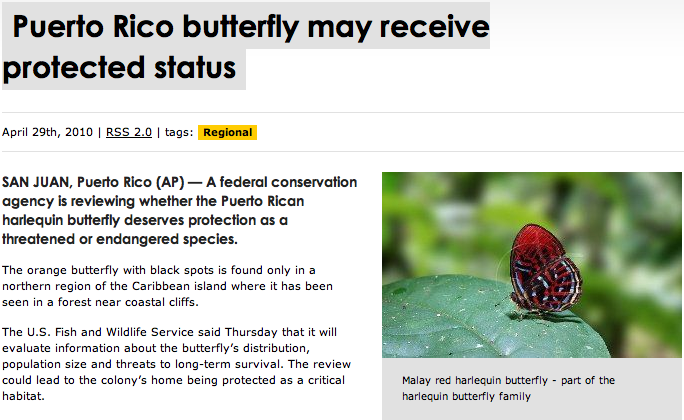
Chris Grinter, on June 23rd, 2010 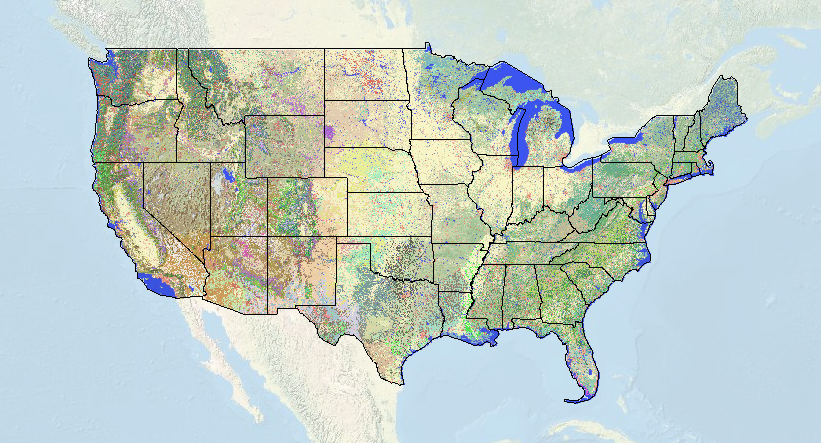
I’ve always wondered how to find the correct terminology for land cover in a given area. Usually, I just ballpark something along the lines of “oak chaparral”. But now I can use this awesome new map brought to us by the USGS/National Biological Information Infrastructure. The level of detail is amazing, and you can specify the degree of accuracy with a drop down tab (1-3). Now with a high-def US topo map I can see exactly where the largest stands of monterrey pine are (actually it’s a California Coastal Closed-Cone Conifer Forest and Woodland) so I can optimally place my trap this weekend.
Continue reading Landscape Cover Map
Chris Grinter, on June 18th, 2010 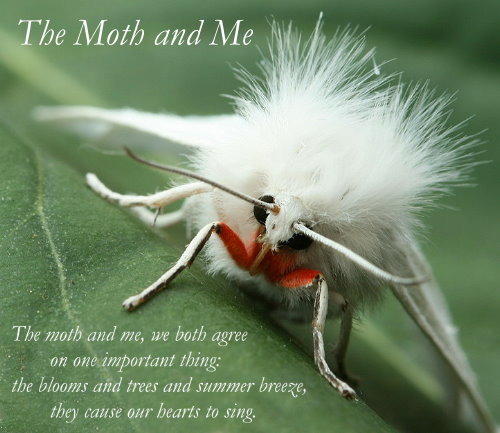
Welcome to The Moth and Me #12, and my first blog carnival. Despite blogging for a few months I have yet to take a look back and reflect on exactly how I became enamored with lepidoptera in the first place. Remembering a time or location where this happened is impossible, and like many of my colleagues and I’m sure many of my readers, I had a butterfly net and “bug cage” in hand as soon as I could walk. When it comes to entomology I believe almost everyone falls in love at first with a large and striking insect. For me it was a butterfly, naturally. I can remember staring for endless hours at the diversity of Ornithoptera and Papilio illustrated in Paul Smart’s famous book. Somewhere along the way in pursuit of something new I began to stray into the nocturnal world. Moths comprise the majority of the diversity of Lepidoptera; while there are nearly 11,000 species in the United States, only a few hundred are butterflies. This quickly opened a door (maybe into an abyss…) to the shocking abundance found everywhere around us. This amazing diversity has now drawn me deep into the biology and evolutionary history of the Lepidoptera. Editing these fourteen contributions of moth blogging together I just can’t help but to reflect back on some of my own mothing journey.

Lpperhaps if I was a child in Europe this moth (Deilephila elpenor porcellus) would have been the first to catch my eye. Over at Urban Moths Ron Laughton has discovered the stunning diversity in his own back yard in much the same way as I did growing up here in the US. Take a look at the types of traps he has been using, most of which he constructed himself. One of the best behaviors of moths is their willingness to dive headlong into the light. Not too far from Ron, Mike Beale has been blogging british moths as well. It can be pretty amazing just how similar our two faunas are (a few moths actually ir the same).
Continue reading The Moth and Me #12
Chris Grinter, gada 11. jūnijs, 2010 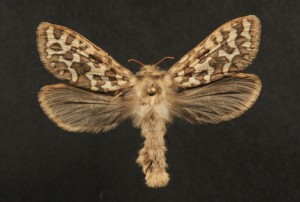
Tas kode ir tikai apmēram tikpat reti kā tās paranormāls vārdamāsa (izņemot to, ka tā ir īsta) – tas Gazoryctra sp. ģimenē Hepialidae. Viņi pārstāv bazālo celma LEPIDOPTERA un ir pazīstams kā spoku kodes vai SWIFT kodes. Spoks – because males of some species are known to fly in true leks, where they hover up and down in grassy clearings at dusk while females observe. These same males also call for females with pheromones, a bit of a backward situation with insects. Swift- rather self evident, but boreal species have been known to be powerful flyers.
One of the features that help indicate this as a basal lineage is the placement of the wings on the body, some wing venation, reduced or absent mouthparts and the lack of a strong wing coupling device. These moths have a “jugum”, which is a small thumb like projection from the top of the hindwing. Other lineages of moths have a tight coupling mechanism known as the frenulum and retinaculum, where bristles hook the two wings together so they remain coupled during flight. When at rest the jugum folds around and probably helps keep the wings together – but not while in flight; the forewing is out of sync with the hindwing and flight is not dynamic (Scoble 1992).
In the Americas Hepialid biology is very poorly understood. Only a handful of life histories are described globally – all of which seem to be endophagous (boring) in plant root systems. Some early instar larvae may feed in the leaf litter or underground on the root system before entering the rhizome. Australia is fortunate to have a diverse and impressive fauna of Hepialidae – many are brilliantly colored and enormous (250mm or up to 12 collas!), and a bit better studied. Some larvae are even common enough that aboriginal tribes have used them as a staple food source.
But back to this moth in particular. I collected it in my black light trap last August up in the Sierra Nevada around 10,500 feet. The species is unknown, and may likely be new. The most frustrating part is that it is the only specimen known to science. The entire genus is very rare, except for one or two commoner species, only a few dozen specimens exist. So is it a female of a species described only from a male? A freakish aberration of an otherwise known species? Or maybe it is actually new. I’ve barcoded the DNA, that actually tells me nothing since there are zero sequences from any closely related species. Faktiski, as far as I know, the other species in the Sierra haven’t even been collected in decades so I can’t even get a sequence from an older specimen. The icing on the cake is their behavior. They rarely, ja kādreiz, come to light – which may be a result of their crepuscular flight. On the right night they may be on the wing for 20-30 minutes, usually a female searching out a male, or a female flying to oviposit (likely just broadcast scatter their eggs on the ground). So come this late August I’ll be returning to the high Sierra with a few volunteers from the entomology department in hopes of seeing one whiz by me on the steep slopes. If I get some more, it might turn out to be impressive new species for California.
Chris Grinter, gada 11. jūnijs, 2010 Who can see what’s wrong with this article?

Chris Grinter, gada 9 jūnijs, 2010 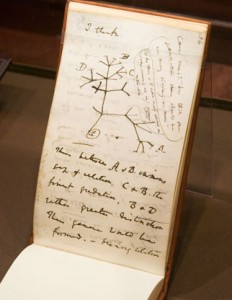
Tas Nesen raksts amerikāņu naturālists ir veikusi otru apskatīt dažus lieliski piepūstas sugas aplēsēm, daži iet augsta kā 100 miljoni (Erwin, 1988). Aplēses autoru veiktie norāda, ka prognozes iepriekš 30 miljoni ir varbūtības <0.00001. To lēsts diapazons ir vairāk iespējams, ir starp 2.5 un 3.7 miljoni sugas (ar 90% uzticība). Tas šķiet diezgan saprātīgi, ņemot vērā, ka šīs ārkārtas aplēses tika lielā mērā balstās uz ekstrapolāciju. Ir acīmredzami daudzas grūtības daudzveidību novērtēšanai, pamatojoties uz tropu posmkāju apsekojumiem – šis raksts atkal izmanto phytophagous (augu ēšana) vaboles uz aplēsēm. Tie ir uzmanīgi norādīt, ka šīs metodes neņem vērā ne-phytophagous insektiem, bet pieņemu, ka tie sekos tradicionālos bioģeogrāfiskajās modeļus daudzveidības. Tas ir nedaudz par jaunu koncepciju, ņemot vērā, ka tad, kad es biju koledžā man mācīja, ka parazītiem ir counterintuitively ne vairāk daudzveidīga tropu reģionos. Šī hipotēze ir biežāk nekā netiek pierādīta nepatiesa, ņemot vērā precīzāku mūsdienu taksonomiskā metodoloģijas. Drīzāk lepni Man palīdzēja nozīme ar parazitārā projekts pie UIUC. Īsumā, uzņemt specifika ir ekstrēmāki tropu vidē ar simtiem mistisks sugu slēptās vidū strauji virzās uz grupām, tādām kā microgastrine Braconids (Plēvspārņi) – pati ir atzinusi taisnība pāri līdzīgu taksoniem,.
Viena interesanta piezīme par papīra ir to iekļaušana sekundāro novērtējuma pamatā LEPIDOPTERA lapotnes assemblages. Viņi pieņem, ka) visi Lepidoptera var atrast lapotnes un b) ka visi Leps ir phytophagous. Tas ir acīmredzami ļoti konservatīvu aplēsi, ņemot vērā, ka ne visi Lepidoptera ir atrodami vainagu, un ne visi ir phytophagous. Lai gan man nav numurus uz rokām, noteiktu procentuālo daļu no LEP daudzveidība ir bijis izslēgts no šīm aplēsēm. Es arī iet uz ekstremitāšu, un pieņemu, ka autori (Novotny 2002) neiekļāva microlepidoptera morphospecies – un, visticamāk, lēsts abundances ar mūsu pašreizējo taksonomiskā izpratni. Tomēr man nav pieejama šī 2002 papīrs, lai es varētu būt nepareizi. Izmantojot šos LEPIDOPTERA skaitļus (No pašā aptaujā kā Coleoptera) pasaules daudzveidību tika novērtēts ar Hamilton et. al. aptuveni 8.5 miljoniem posmkāju sugām.
Lai gan es piekrītu, ka ārkārtas tāmes desmitiem desmitiem (vai simtiem) miljoniem posmkāju sugām, iespējams, smieklīgi; Es esmu no nometnes, ka pašreizējā izpēte ir norādīts, ka ir iespējami aplēses apakšējo desmitiem miljonu sugu. Autori nav izdevies iekļaut pētījumus, kas līdzsvaro savu pieņēmumu, ka tropu suga uzrāda zemāku beta dažādību (Novotny 2002, 2007). Tajā pašā žurnālā, Daba 2007, Dyar et. al. ir norādījušas, ka amerikāņu tropos uzrāda lielāku beta daudzveidību, nekā tika uzskatīts iepriekš. Nu var teikt, ka aprēķini beta dažādība Austrālāzijas tropos ir kļūdaini, vai tie ir savienojami ar sugas assemblages no Dienvidu mežu. Tas viss runā ar grūtībām ekstrapolējot aplēses sugu visos tropu reģionos. Šie aprēķini ir balstīti uz visaptverošiem kukaiņu apsekojumu Jaungvineja, varbūt tie nav precīzi atspoguļo patieso daudzveidību amerikāņu tropisko mežu, un šie numuru diapazoni ir zemas.
Kā gala doma, vairums assesments tiek vērsta uz tropu posmkāju. Šķiet, viss ir pārāk iespējams, ka kopējais skaits visu sugu, tostarp baktērijām un Archaea, var viegli pārsniegt desmitiem miljonu. Bet vispārinot šos numurus ir vēl nedrošs nekā posmkāju, ņemot vērā galējās zināšanu trūkums mums.
Chris Grinter, on June 4th, 2010 
Can’t find a way to link the direct video (not even VodPod), but here is the link to the Daily Show site. How many physicists pulled their hair out when they heard this one? Yikes, he is the newly appointed spokesman. Don’t worry Neil, you’re not going anywhere after this.
Having not aired yet I can’t tell exactly how apologetic the show ir, but it seems heavily focused on finding the “creator”. I can hear it in John Stewart’s voice when he pulls back from ripping into Freeman’s “god of the gaps” theory. Perhaps there was an edit and we missed the question where John Stewart asked “Morgan, can you define a logical fallacy for us… perhaps the god of the gaps one?” I believe that any physicist who ever says “god was responsible” says it with no deeper meaning than when Einstein famously evoked god’s dice. That’s to say, a non-literal and non-personal god found only in the beauty and splendor of nature.
Chris Grinter, gada 2. jūnijā, 2010 
Ja ir kāda lieta, ko es iemācījos koledžā, tas bija veids, kā viegli novērst uzmanību. Es mēdzu turēt televizoru ieslēgtu fonā, kamēr strādāju pie datora, īpaši vēlu vakarā, kad es parasti cīnos uzvarošā karā pret miegu. Citu nakti kaut kas man iekrita acīs: vīrietis, kurš savā pagalmā tur spieķus. Skaļāk, lai muļķības plūst. Tas bija tikai idiotisma uzplaiksnījums citādi labā mājas uzlabošanas programmā. Esmu pieradis pie TV, kas balstīta uz muļķībām tādos tīklos kā History Channel vai Discovery tīkls (viņu šovu kvalitāte ietver tādus dārgakmeņus kā “The Haunted: spoki un mājdzīvnieki”), bet es biju nedaudz pārsteigts, redzot, ka BS iepriecina manu vietējo PBS staciju.
Pāri uz “American Woodshop” saimnieks Skots Filipss būvēja skaistu dārza lapeni. Šeit jūs varat skatīties visu bez maksas: Epizode 1609: Periodiski arhitektūras līstes un apdare. Klipam nav laika zīmogu, bet dowsing nāk ap viduspunktu. Demonstrējot materiālus, kas nepieciešami koka nostiprināšanai pie zemes, viņš brīdināja nejauši ierakties jūsu pagalmā, nezinot, kur atrodas pazemes ūdens., bija elektrības vai gāzes vadi: stabils padoms. Tātad, lai to izdarītu, jums vajadzētu (pārfrāzēts) “paņemiet mēteļu pakaramā gabalus, derēs jebkas, pārvērst tos par “L”. Ejot uz priekšu, stieņi krustojas – tur (viņi šķērso) – tieši tur ir apūdeņošanas līnija. 9 beidzās 10 cilvēkiem ir šī spēja, bet, ja rodas šaubas, jums vajadzētu piezvanīt profesionālim“. Mans tulkojums “Labi puiši, neuztraucieties par to, ka pieaicināt kādu puisi, lai to izdarītu, izdomājiet to šādā veidā”. Pastāstiet man, lūdzu, kurš vīrietis, kurš pusnaktī nopietni skatās mājas labiekārtošanas šovu, atdotu pilnvaras kādam citam pirms tam’ koledžas mēģinājums? Pat ja mēs uz brīdi to piešķiram 9 beidzās 10 cilvēki to varētu darīt, kas par to vienu puisi, kurš nevar? Vai nav bezatbildīgi ieteikt, ka varat izvairīties no tikai elektrības/ūdens/kanalizācijas/gāzes 90% Laikā? Hmm..., trāpīja tam nepatīkamajam gāzes vadam…
Būdams zinātnieks, skeptiķis un vilcinātājs – Es uzrakstīju Skotam ziņojumu par to, lai varētu izvairīties no sava darba. Šodien viņš laipni atbildēja, sakot: (izvilkums)
“Mūsu ķermeņi ir elektromagnētiskie lauki. Izjauc lauku un notiek lietas…. Pieminēto tehniku iemācījos no pilsētas darbinieka, ko viņi izmantoja līniju atrašanai. Ne no šarlatāna. Mana komanda bija lieciniece šīs tehnikas objektīvai izmantošanai.”
Īsumā, Nē, mūsu ķermeņi nav elektromagnēti. Ikviens var turēt kompasu, vai TV… tos nesaskrūvējot. Franz Mesmer radīja ideju par “Dzīvnieku magnētisms” 18. gadsimta pēdējā pusē (arī izgudroja “hipnotizēšana” AKA hipnotisms) – un to pēkšņi atmaskoja Bendžamins Franklins un citi. Esmu arī nedaudz noraizējies, dzirdot, ka pilsētas darbinieki paļaujas uz devām, lai atrastu publiskās līnijas! Bet, lai virzītos uz priekšu, iedziļināsimies mītos par dēstīšanu. Es piekrītu, ka šķiet, ka attiecībā uz atkāpšanos ir zināma intuitīva patiesība, tomēr zinātniski tas ir nepatiess, tas joprojām ir pārliecinošs. Protams… elektriskās lietas pazemes ietekme jutīgi vadi augšā. Un wow, paskaties uz visiem šiem puišiem, kuri var atrast ūdeni, vai jauda, vai… pazuduši cilvēki… vai bumbas? Labi, paliksim pie ūdens šai sarunai.
(turpinājās)
Continue reading An Uphill Battle
Chris Grinter, gada 1. jūnijā, 2010 Tikai daži attēli ar parastajiem Kalifornijas lepsiem, pirms dažām nedēļām uzņemta piekrastes diapazonā netālu no Santakrusas. Sāku strādāt cauri dažiem fotoattēlu atlikumiem…

Euphydryas chalcedona
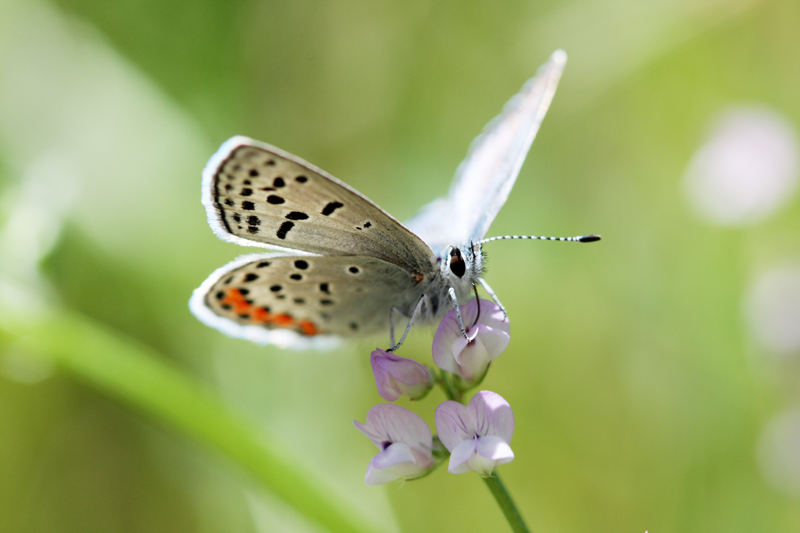
Plebejs ACMO
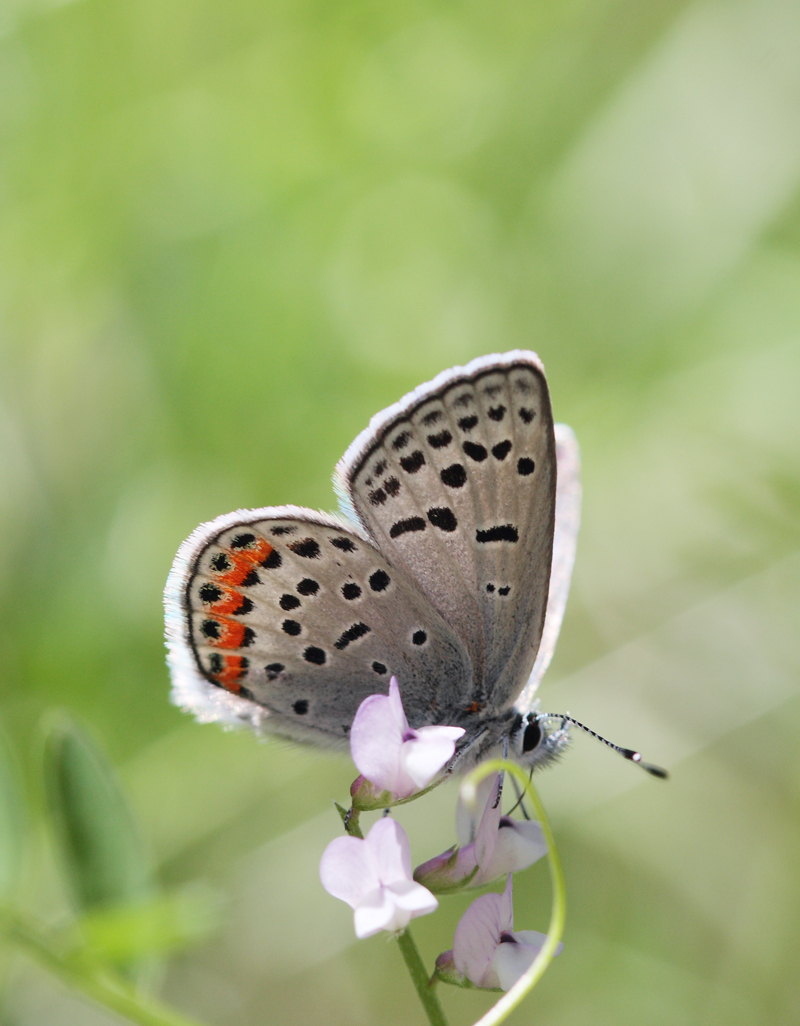
Plebejs ACMO

Ethmia arctostaphylella ieslēgts Eriodictyon sp.
Viena interesanta piezīme par Ethmia arctostaphylella – nosaukums ir nepareizs nosaukums, tas faktiski nebarojas Arctostaphylos (Manzanita). Apraksta laikā in 1880 Volsingems bija atradis kāpurus, kas kuplo manzinatas lapām, un uzskatīja, ka tas ir viņu saimniekaugs. Džerija Pauela satriecošajā monogrāfijā par grupu, no kuras viņš norāda, ka šī kode ir audzēta Eriodictyon – kas ir zieds, uz kura ir uzsēdusies kode. Abi augi aug blakus, un ir diezgan viegli redzēt, kā klejojošs kāpurs atrod ceļu uz kaimiņu.
|
Skepticisms
|













